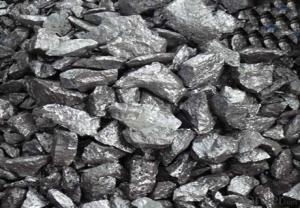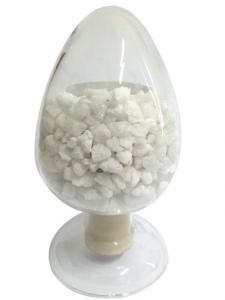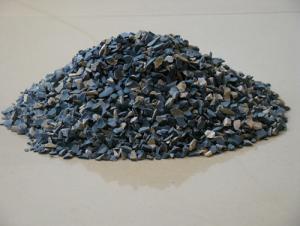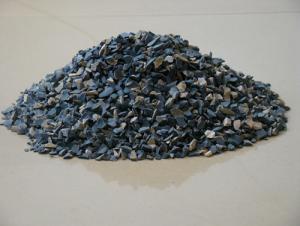Refractory Raw Materials-Metal silicon Materials
- Loading Port:
- Tianjin
- Payment Terms:
- TT OR LC
- Min Order Qty:
- 20 m.t.
- Supply Capability:
- 1000 m.t./month
OKorder Service Pledge
OKorder Financial Service
You Might Also Like
Bauxite is a naturally occurring, heterogeneous material composed primarily of one or more aluminum hydroxide minerals, plus various mixtures of silica, iron oxide, titania, aluminosilicate, and other impurities in minor or trace amounts.
Application
Aluminium is a product of increasing importance for manufacturing because of its light weight, strength and durability as well as its capacity to be recycled. On a life cycle assessment basis, the high strength to weight ratio of aluminium results in significant fuel savings, particularly where substitution can be made for heavier construction materials.
Features
With high aluminum
Low iron
Low silicon and low alkali content
In the same condition, using manganese or silicon to deoxidize separately, the burn out rate are 46% and 37%, but it is only 29% if using manganese alloy to deoxidize. So, it is used widely to smelting steel and its output increases faster than ferroalloy's, so has become an indispensable composite deoxidizing and alloy additives in steel industry. The silicon-manganese which contains carbon below 1.9% still is used to produce medium/low-carbon ferromanganese and semi-finished products of electro silicothermic process manganese metal.
- Q:What are the chemical composition of refractory cement?
- Calcium aluminate prepared by calcining as the main component. Aluminate cement takes bauxite and limestone as raw materials, alumina content of about 50% as the clinker. And it is a hydraulic cementing material made by grinding. Refractory cement is also known as aluminate cement.
- Q:What are the main characteristics of the sic refractories?
- 1. The usge temperature of silicon carbide refractory is generally 1760 ℃ 2. The silicon carbide refractories can withstand the dramatic changes of temperature and have a good thermal shock resistance performance. To prevent the cracking or breaking of lining refractories. 3. Under the conditions of high or low temperature, it can withstand a certain compressive stress. 4. Under the conditions of high or low temperature, it can withstand friction. 5. It can withstand the huge hydraulic pressure or buoyancy of the metal. 6. It can also withstand the effect of furnace gases to prevent the infiltration of other refractories and reactions.
- Q:Who knows what kind of fire protection material is better?
- Characteristic of polyurethane rigid foam thermal insulation decorative composite board: (1) ultra high cost performance, increased property's selling point (high cost performance) new model of thermal insulation material, excellent thermal insulation properties, elegant decorative effect, 50 years of service life, reduce maintenance costs and social waste. (2) it overcomes defects of traditional insulation technology (to solve the freezing and thawing, veneer cracking and shedding) traditional benzene board, the phenomenon of freezing and thawing that is easily appear in plastic extruded sheet, paint finish is easy to crack; its veneer facing can easily fall off; thermal insulation materials and wall are poorly adhered, easy off the whole. There is a themal bridge in dry hanging wall. (the characteristics of polyurethane composite board)
- Q:What is the upper temperature limit for refractory materials?
- The key depends on what refractories you use
- Q:Which refractory material is better in China? Industrial furnace, mainly in non-ferrous industries, glass kiln, cement kiln business.
- Such solid nano microporous insulation material with nano inorganic refractory powder special, with a huge surface area, nano particles contact between the minimum point contact point contact thermal resistance is very large, the heat conduction effect of the material becomes very small, resulting in heat conduction coefficient of solid such nano porous insulation materials very small; nano pores formed of nanoparticles, the average size of 20 nm, and the average free path of molecular thermal motion at room temperature under static air is 60 nm, thus locking the air molecules in powder within nano pores, making the micro convection heat transfer effect between the stationary air molecules disappeared. The room temperature thermal conductivity of solid such nano microporous insulation material is lower than the static air; at high temperature, the main effect of heat transfer heat radiation, Good energy-saving insulation materials with nano microporous infrared additive special, stop at a high temperature and reflected infrared radiation, reduce the heat radiation effect to the lowest point, the radiation heat transfer coefficient of materials under high temperature is reduced to the lowest value.
- Q:Do you know what the main indicators are for the inspection of refractory materials? Thank you very much for your requests and reports
- Fire resistance, combustion performance, combustion heat value, fire resistance, high temperature resistance, fire rating test and so on. Regular testing institutions are generally reported, Qingdao standard also can, the results are more accurate.
- Q:How to divide the fire rating standards of insulation materials?
- 1. According to the GB8624-97 national standard, building materials can be divided into following levels in terms of combustion performance. A-level: Non-combustible building materials: Materials almost don't burn. B1-level: Fire-retardant building materials: Fire-retardant materials are good at resisting flame. It is difficult for them to burst into fire when coming across open fire in the air or at high temperature. It will not quickly get wilder and when the fire source removes, it will be extinguished immediately. B2-level: Combustible building materials: Combustible building materials can play a certain role in preventing combustion. It will immediately burst into flames when coming across open fire or at high temperature, and will lead to fire spreading, such as wooden pillars, roof frames and beams as well as stairs. B3-level: Inflammable building materials: Inflammable building materials are highly flammable with no flame retardant ability. The fire risk is high. 2.The exterior wall thermal insulation materials can be classified according to fire rating. 1. Insulation materials with A-level combustion performance: rock wool, glass wool, foam glass, ceramic foam, foam cement, close-celled perlite, etc. 2. The insulation materials with B1-level combustion performance: specially-treated extruded polystyrene boards(XPS)/ specially-treated Polyurethane(PU), Phenolics, Polystyrene rubber powdery particles,etc. 3. Insulation materials with B2-level combustion performance: Expanded polystyrene sheets(EPS), Extruded polystyrene board(XPS), Polyurethane(PU), Polyethylene(PE), etc.
- Q:What are the classifications of refractory? Which category does steel ladle castable belong to?
- In addition, it can be divided into refractory, shapeless refractory material. And it can also be divided into acidic refractory, basic refractory and neutral refractory. If you want to know more, you can ask thme. In fact, every company has different refractory clasifications. There are more clasifications in Huaheng.
- Q:What kind of flexible fireproof material is really good?
- Flexible waterproof materials mostly are asphalt, linoleum and other organic material, which is also called linoleum coiled material waterproof layer. it uses the linoleum, glass cloth fabric as tire layer coil, using all kinds of cementing material phase of asphalt and so on. Make coil bind on roof structure plate leveling layer to form waterproof layer. Flexible waterproof material has high tensile strength, big elongation and light quality, which is convenient to construct. But it has relatively strict operation technology can resistant penetration and aging resistance than rigid materials, aging. Its life is short. Refers to a kind of waterproof material form relative to the rigid waterproofing materials such as waterproof mortar and waterproof concrete. In the form of its and grassroots attached two categories, it includs waterproof coating and waterproofing materials. According to different paste position of waterproof material, it can be divided into outside waterproof waterproof (outsourcing) and inside waterproof (insourcing waterproof) two kinds. Waterproof coil material must be stuck in the grass-roots that have enough stiffness of the. Before pasting, you should apply leveling layer and waterproof layer should be added protective layer of the outside, and need to make the rotation of the flexible material, the processing of subsequent and head closing, in order to ensure the continuity of the waterproof layer and sealing. In addition, there are all kinds of waterproof material and moistureproof coating material.
- Q:What are the additives and recipes of refractory?
- Water reducing agent is to evidently reduce mixing water content while keep the slamp value of refractory castable almost invariant, also known as fluid loss agent. Water reducing agent itself cannot have chemical reaction with material component or compose new chemical compound, but it just seemingly has physical and chemical reactions. The binding agent of refractory castable is calcium aluminate cement combined with clay and oxide micro powder. In commonly used water reducing agents, the inorganic includes sodium pyrophosphate (Na4P2O7), sodium tripolyphosphate (Na5P3O10), sodium hexametaphosphate [(NaPO3) 6], super sodium polyphosphate (Na2P4O11), sodium silicate (Na2O · nSiO2 · mH2O), and so on; the organic includes lignosulphonate water reducer (sodium lignosulphonate, calcium lignosulphonate); naphthalene water reducer (naphthalene sulfonate or naphthalene homologues with formaldehyde condensate): water soluble resin water reducing agent (sulfonated melamine formaldehyde resin, abbreviated as composite of melamine water reducer).
1. Manufacturer Overview |
|
|---|---|
| Location | |
| Year Established | |
| Annual Output Value | |
| Main Markets | |
| Company Certifications | |
2. Manufacturer Certificates |
|
|---|---|
| a) Certification Name | |
| Range | |
| Reference | |
| Validity Period | |
3. Manufacturer Capability |
|
|---|---|
| a)Trade Capacity | |
| Nearest Port | |
| Export Percentage | |
| No.of Employees in Trade Department | |
| Language Spoken: | |
| b)Factory Information | |
| Factory Size: | |
| No. of Production Lines | |
| Contract Manufacturing | |
| Product Price Range | |
Send your message to us
Refractory Raw Materials-Metal silicon Materials
- Loading Port:
- Tianjin
- Payment Terms:
- TT OR LC
- Min Order Qty:
- 20 m.t.
- Supply Capability:
- 1000 m.t./month
OKorder Service Pledge
OKorder Financial Service
Similar products
New products
Hot products
Hot Searches
Related keywords




























